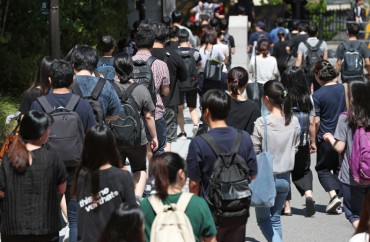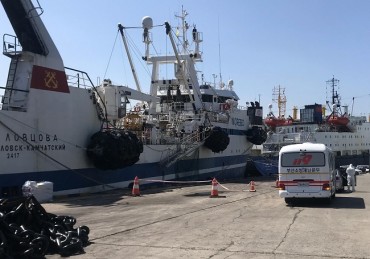
This photo, provided by the Korea Coast Guard, shows a 2.11-meter-long great white shark pulled out of the water at a port in Samcheok, 190 kilometers east of Seoul, after it was found dead in a fishing net in seas 3.7 kilometers off the port on July 6, 2023. The police issued a warning to vacationers.
SEOUL, Aug. 14 (Korea Bizwire) — Sharks discovered in the seas to the south of the Korean Peninsula are making their way north, a study showed Sunday.
According to a report published by the National Institute of Fisheries Science, sharks that were typically observed in the Jeju strait, the sea east of Jeju, and the southern part of the West Sea, are now being sighted near the coast of Gangwon Province and North Gyeongsang Province.
Shortfin mako sharks were located in Goseong, Gangwon Province, in both April of the previous year and June 2019. During 2017, a whale shark appeared off the coast of Yeongdeok, North Gyeongsang Province.
Earlier this month, a highly aggressive blue shark emerged near Gangneung Port in Gangwon Province, prompting the Korean Coast Guard to raise their alert level.
In the prior month, a salmon shark measuring 211 centimeters in length was discovered deceased in Samcheok, Gangwon Province, entangled in a net.
The sharks have been appearing along the Yellow Sea Warm Current and the Tsushima Warm Current, suggesting a potential link between shifts in sea temperatures and the migration of these sharks.
The South Korean Sea has witnessed a recurring increase in sea temperatures during the summer since 2010.
The presence of more robust air masses near South Korean seas during the summer over the last decade, encompassing the expanding North Pacific High, is viewed as one of the factors contributing to the intensified heat waves in the summer.
Lina Jang (linajang@koreabizwire.com)






